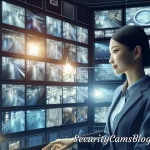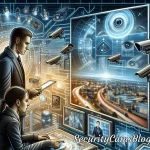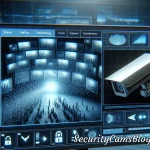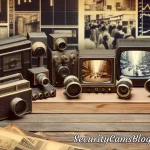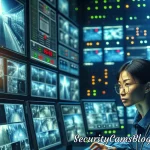In the realm of security, video surveillance plays a pivotal role in the protection of assets, deterrence of criminal activities, and provision of vital information during investigations. However, the effectiveness of a video surveillance system hinges not just on the quality of cameras used but significantly on an often-overlooked aspect: lighting. Proper lighting is crucial for capturing high-quality video footage, especially in low-light conditions. This article delves into the importance of video surveillance lighting, exploring its various aspects and implications for enhancing security measures.
The Essence of Lighting in Video Surveillance
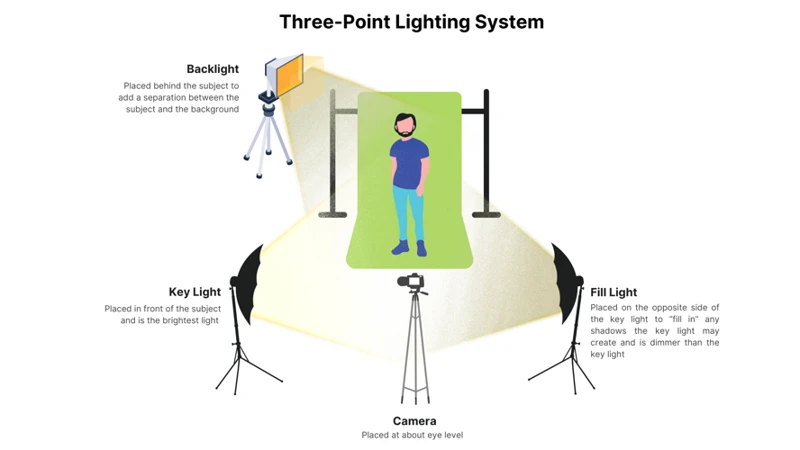
Lighting serves as the backbone of video surveillance, directly impacting the quality and reliability of video footage. Inadequate lighting can lead to grainy, unclear images that may fail to capture crucial details, such as facial features or license plate numbers. On the other hand, well-planned lighting can enhance image clarity, color fidelity, and overall visibility, ensuring that surveillance cameras perform optimally regardless of the time of day or night.
Overcoming Challenges in Low-Light Conditions

Low-light conditions present significant challenges for video surveillance systems. Traditional cameras struggle to capture clear images in dim environments, leading to compromised security. Advances in technology have led to the development of low-light and infrared cameras designed to address these issues. However, even these specialized cameras benefit greatly from supplemental lighting, which can dramatically improve image quality and extend their operational range.
Types of Surveillance Lighting
Infrared Lighting
Infrared lighting is invisible to the human eye but can greatly enhance the capabilities of night vision cameras. It provides a discreet means of illuminating an area without drawing attention or disrupting the environment.
LED Lighting
LED lighting is known for its energy efficiency and longevity. It offers a versatile solution for surveillance lighting, capable of providing bright, consistent light across a wide area. LED lights can also be dimmed or adjusted to suit different surveillance needs.
High-Intensity Discharge (HID) Lighting
HID lighting, including metal halide and high-pressure sodium lights, is powerful and effective for illuminating large areas. Although less energy-efficient than LEDs, HID lights are beneficial for outdoor spaces requiring high-intensity illumination.
Strategic Placement of Lighting
The effectiveness of surveillance lighting extends beyond its type and quality; its placement is equally critical. Lighting should be positioned to minimize shadows and glare, which can obscure or wash out video footage. Careful consideration must be given to the angle and height of light sources, ensuring that they complement the camera’s field of view and enhance visibility without causing reflections or blind spots.
Impact of Lighting on Color Accuracy and Image Resolution
Proper lighting is essential for maintaining color accuracy and high image resolution in video surveillance. Cameras rely on light to accurately render colors, making it easier to identify subjects and objects. Adequate lighting also contributes to higher resolution images, enabling the capture of finer details critical for identification and analysis.
Lighting and Its Role in Deterrence
Beyond improving video quality, effective lighting serves as a powerful deterrent against criminal activities. Well-lit areas are less attractive to intruders, vandals, and other perpetrators, as they increase the risk of being identified and caught. Strategic lighting can make a significant difference in enhancing the perceived and actual security of a location.
Energy Efficiency and Cost-Effectiveness
Considering the continuous operation of surveillance systems, energy efficiency becomes a vital aspect of choosing the right lighting solution. LED lighting, in particular, offers significant advantages in terms of energy consumption and cost-effectiveness, reducing the operational costs of video surveillance systems without compromising on performance.
Integration with Smart Surveillance Systems
Modern surveillance systems often incorporate smart technologies, including motion sensors and automated lighting controls. These systems can dynamically adjust lighting based on activity or predefined schedules, optimizing illumination for video capture while conserving energy when full lighting is not necessary.
Legal and Ethical Considerations
Implementing surveillance lighting requires careful consideration of legal and ethical issues. It is essential to ensure that lighting does not invade privacy or cause discomfort to individuals. Compliance with local regulations and standards is necessary to avoid potential legal challenges and maintain public trust in surveillance practices.
Future Trends in Surveillance Lighting
The future of surveillance lighting is likely to see further innovations, with a focus on enhancing efficiency, performance, and integration with advanced surveillance technologies. The development of smarter, more adaptive lighting solutions will continue to improve the effectiveness of video surveillance systems in providing security and peace of mind.
Understanding the intricacies of video surveillance extends beyond just the importance of lighting. To get a comprehensive understanding of how to effectively secure your premises, consider exploring related aspects such as the significance of video storage in surveillance, the strategic placement of indoor surveillance cameras, key factors to consider when choosing video surveillance cameras, the cost considerations for wireless video surveillance systems, and the environmental factors that impact wired video surveillance setups. Each of these components plays a critical role in creating an effective and reliable video surveillance system.
Conclusion
The importance of lighting in video surveillance cannot be overstated. It plays a critical role in ensuring the effectiveness of security cameras, enhancing image quality, ensuring color accuracy, and acting as a deterrent against criminal activities. As technology advances, the integration of smart lighting solutions with video surveillance systems will further elevate the standards of security and protection. By understanding and implementing the principles of effective surveillance lighting, organizations and individuals can significantly enhance their security measures, safeguarding their assets and ensuring a safer environment for all.


